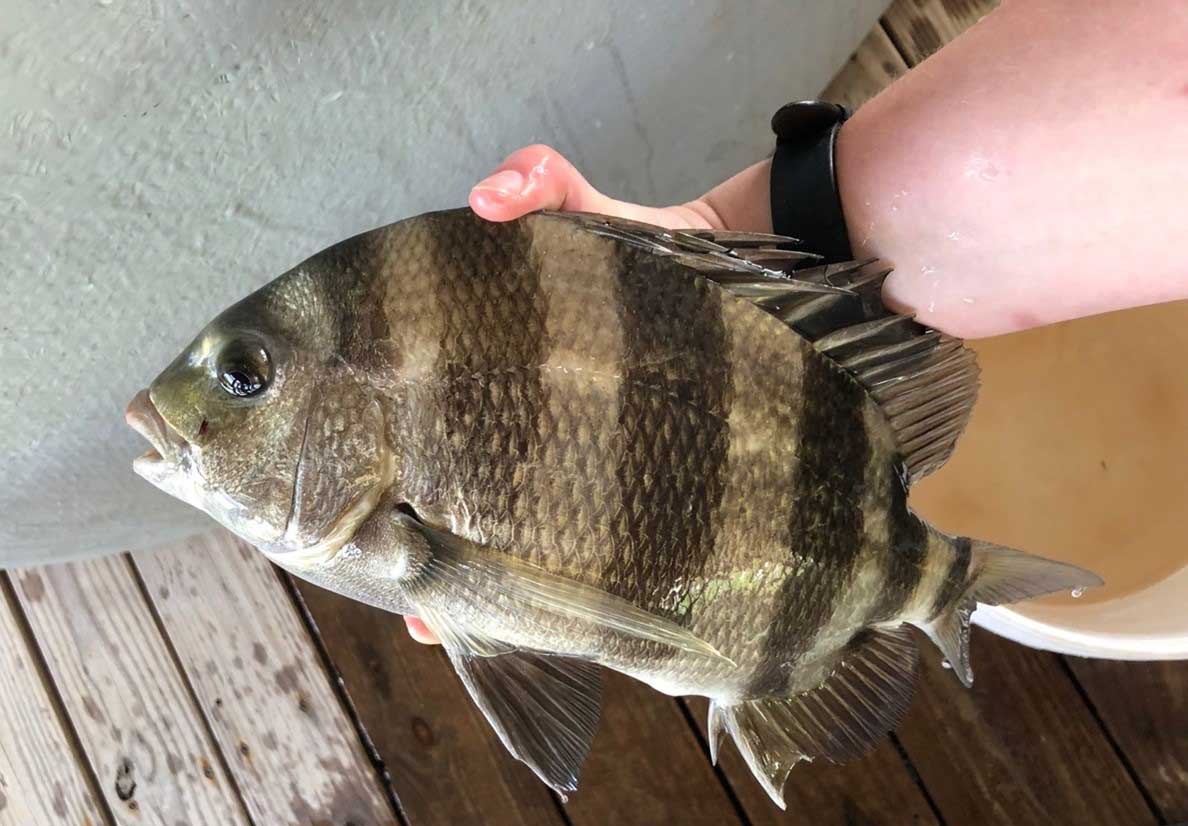Top-down and bottom-up oyster reef survival success
Project Leader: Merritt McCall, Masters Student
Project Details
Background
Oyster reefs are a vital component of nearshore, estuarine ecosystems. The ecosystem services provided by these reefs are highly valuable to humans and marine species alike: they protect shorelines from erosion, filter surrounding water, provide an incomparable nursery habitat for a wide range of juvenile fishes and mobile crustaceans, and create structure and shelter for their respective prey species. Efforts to restore essential oyster reef habitat along the US Atlantic and Gulf Coasts have been extensive, with 259 reef restorations documented in the northern Gulf of Mexico alone.
Objectives
The objectives of this study are to (1) assess the longevity of oyster reef restoration and (2) look at oyster restoration through the lens of species interactions

Approach
Bottom-up
An evaluation of previous restoration efforts that examine the importance of the structure provided by oyster reefs will be conducted to assess oyster reef success via dive operations. There are both intertidal reefs and subtidal reefs that will be sampled. Intertidal reefs were deployed in three tidal creeks located on Dauphin Island, AL in April of 2005. Subtidal oyster reefs were deployed in three locations in Mobile Bay, AL along a biophysical gradient during January of 2004.
Top-down
Common predator-prey interactions will additionally be examined as these can have significant impacts on reef health and success. Reef-associated crab species, Florida stone crab (Menippe mercenaria), Atlantic mud crab (Panopeus herbstii), and blue crab (Callinectes sapidus) are known predators of spat (<40 mm) and juvenile (40 mm-75 mm) sized eastern oysters (Crassostrea virginica). Sheepshead (Archosargus probatocephalus) are one of many predatory fishes that utilize oyster reefs. Through analyzing the complex predator-prey interactions that occur in a replicated reef environment, conclusions will be drawn to gain a better understanding of Sheepshead’s ecological impact on oyster reefs.
Funding Sources:
University of South Alabama, Dauphin Island Sea Lab, Coastal Conservation Association of Alabama